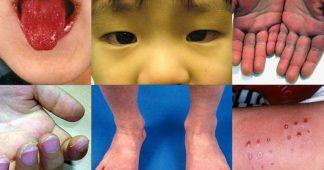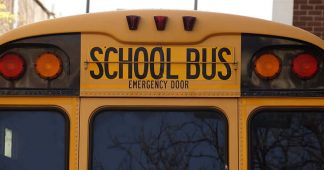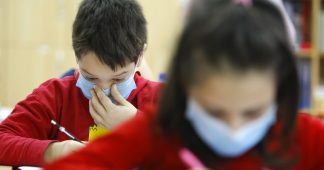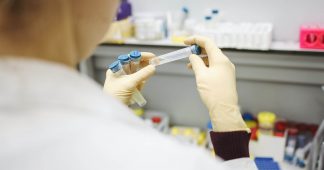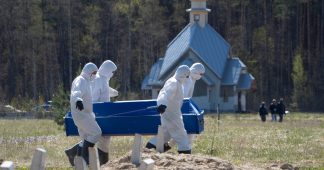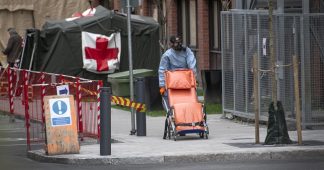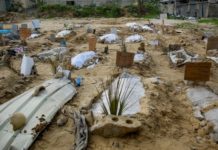By Benjamin Mateus
Oct. 10, 2020
A brief note on children
Researchers from Princeton Environmental Institute (PEI), Johns Hopkins University, and the University of California at Berkeley, recently conducted a larger contact-tracing observational study with public health officials in the southeast Indian states of Tamil Nadu and Andhra Pradesh, involving 575,071 individuals who were exposed to 84,965 confirmed cases of COVID-19.
The lead author, Ramanan Laxminarayan, found that 8 percent of infected individuals accounted for 60 percent of new infections, while 71 percent of infected individuals did not pass on the infection to any of their contacts. COVID-19 deaths occurred, on average, six days after hospitalization, versus 13 days on average in the US. As in other countries, the proportion of deaths is skewed to the older population.
The study found, however, that children and young adults accounted for one-third of COVID cases and were a significant factor in the transmission of the virus. Additionally, children and young adults were prone to contracting coronavirus from people their age. “Kids are very efficient transmitters in this setting, which is something that hasn’t been firmly established in previous studies,” the lead author explained to PEI correspondent Morgan Kelly. This has significant implications for the reopening of schools as news of teachers succumbing to COVID-19 has made headlines.
In the US, according to data provided by the American Academy of Pediatrics, as of October 1, there were 657,572 children infected with COVID-19 out of 6,231,564 total cases, or 10.6 percent. This puts the overall rate at 874 cases per 100,000 children in the population, after a series of weekly increases from 583 per 100,000 children as of August 20.
Across 42 states and New York City, the death rate for children was 0.02 percent of those infected, while only 1.7 percent of children infected have been hospitalized. There have been 112 cumulative child deaths in the US. There is similar data for Europe and Asia.
There are nonetheless some disturbing trends. After California, the most populous state and the one with the largest number of children infected with COVID-19, the states with the highest totals of children infected include Florida, Tennessee, Arizona, Georgia, and South Carolina, across the south and southwest. Illinois is the only northern state high on the list. In percentage terms, the worst figures are in Wyoming and North Dakota in the north, and Tennessee and South Carolina in the south. The early northern hotspots for the pandemic—New York, New Jersey, Massachusetts, Michigan—have some of the lowest rates for children, since the virus swept disproportionately through nursing homes.
A severe condition that afflicts a small subset of children infected with the coronavirus termed COVID-19 Associated Multisystem Inflammatory Syndrome (MIS-C) presents two to four weeks after the onset of COVID. The disease was identified in April 2020, when a cluster of children in Europe and New York City went into a hyperinflammatory shock that had features like Kawasaki disease and toxic shock syndrome. Clinical signs and symptoms included fever, rash, conjunctivitis, gastrointestinal symptoms, elevated inflammatory markers, and cardiac injury. As of July 29, the CDC has documented 570 MIS-C patients in the US with 10 fatalities.
In the poorest countries, the socioeconomic consequences of the pandemic are likely to be even more deadly for children than the strictly medical ones. Worldwide, 15,000 children under the age of five die each day from all causes (5.4 million annually). The annual mortality rate comes to 3.9 percent of all children. But the poorest countries, like Chad, Nigeria, and others in sub-Saharan Africa, have death rates in the 7 to 10 percent range. Despite the gains made in the last three decades in bringing these numbers down, the economic devastation wrought by the pandemic will indirectly lead to more deaths among this fragile group who will lose access to clean water, nutrition, and health services, while political pressures may lead to regional conflicts and other violence.
Does race or class drive COVID-19 mortality?
Early during the pandemic in the United States, even before President Trump had made his notoriously wrong prediction that the virus would suddenly disappear, it became clear that the pandemic was having a disproportionate impact in the poorest working class neighborhoods.
A February 4 article in the Philadelphia Inquirer noted, “poverty is instrumental in cultivating conditions that allow the disease to spread. In turn, infectious diseases exacerbate certain factors that contribute to poverty. In many parts of the world, healthcare is not free, nor is it cheap, placing huge financial stress on families who may already live under the poverty line.” On February 7, Mother Jones wrote, “while certain racial and ethnic groups might be more vulnerable to infectious disease, it’s well documented that the poor bear the brunt of viral disease outbreaks.”
Bob Woodward’s reporting, based on lengthy interviews with Trump, documented that by this time the entire government apparatus had been fully briefed on the deadly nature of the virus, and there was a clear understanding of the deadly potential of the pandemic’s spread through densely populated urban centers where the poor are concentrated. The consequences could already be seen in late February, with the images and reports from Italian hospitals and cities.
It became evident to the Democratic Party and its auxiliary organizations that discussions in the press and the impact of the contagion on American society might highlight the socioeconomic divisions within American society. Accordingly, they worked to redirect discussion of this massive social disaster into the well-established channels of identity politics. Race would be used to suppress any discussion of social class and poverty.
By the end of March, Democratic lawmakers in Congress, led by senators Elizabeth Warren, Cory Booker, and Kamala Harris, and representatives Ayanna Pressley and Robin Kelly, began pushing for federal disclosure of racial data regarding COVID-19. By early April, major news outlets, including the New York Times and the Washington Post, were actively publishing racialist narratives on the pandemic.
Additionally, from early to mid-April, Democratic governors were emphasizing the release of state data on race and COVID-19 and the formation of task forces meant to address racial disparities. By April 14, more than 80 Democratic senators and representatives sponsored a bill to compel federal health officials to post data daily that breaks down COVID-19 cases and deaths by race and ethnicity. No such requirements were imposed in relation to income or occupation.
Every state and national COVID-19 dashboard has now framed their reports in racial terms omitting any occupational data on victims of COVID-19 or census tract data that would provide socioeconomic inferences. Racial inequities and systemic racism were repeatedly highlighted in the media. And in fact, cities like Detroit, Chicago, Houston, Philadelphia, and New York City boroughs were devastated by the pandemic. But their populations did not consist solely or primarily of people of color. They were working people of all races, ethnicities and shades of skin color.
In Michigan, for example, the heaviest death toll was initially in Detroit, and at one point, it was being reported that African American residents of that city were three times more likely to know someone who has died of COVID-19 than outstate residents, who are predominately white. But these disparities lessened as the pandemic penetrated into rural and small-town areas. Whites now comprise well over half of COVID-19 cases in Michigan, and the county with the largest number of infections is Oakland County, comprising the northern and northwestern suburbs of Detroit, not Wayne County, which includes the city and its western and southwestern suburbs.
More recent and conscientious research has returned to describing the role of poverty and its association with the severity of COVID-19.
Nicholas Papageorge et al. showed that people with lower income, less flexible work arrangements, and lack of outside space at home are less likely to social distance: “Broadly, our findings align with typical relationships between health and socioeconomic status.”
Mark Stabile et al. highlighted the chronic conditions that predispose to severe outcomes with COVID-19 infection occur more frequently in those in the lowest economic status. They write, “it stands to reason then that if those with lower incomes are more likely to have multiple chronic conditions and those with multiple chronic conditions are more likely to experience severe responses to COVID-19, then low-income people are going to be hit harder by COVID-19, all else equal. Add to this the existence of access barriers for testing and care that still exist by income in many places, and the effect of getting COVID-19 if you are lower-income will be more severe on your health, on average.”
A study conducted by Caitlin Brown and Martin Ravallion noted that they found a higher population share of blacks and Hispanics was associated with higher infection rates at the county level. They further characterize their findings: “We see the combined effect of the higher incidence of poverty among these racial/ethnic groups and the fact that there is a concentration of these groups among the designated ‘essential workers’ in healthcare, food preparation, and other services, who are more exposed to the virus through their work.” They go on to add that socioeconomic predictors tend to matter more to “deaths via infection rates, rather than independently of the latter.”
The ruling elite understands that the pandemic hits hardest those most disadvantaged by capitalist relations regardless of the color of their skin or racial and ethnic demographics. The poorest in the urban centers have faced decades of hardship in every aspect of life from physically demanding labor, poor nutrition, and infrastructure, inadequate access to health care, which has seen their life expectancies well below those in higher income brackets. Wealthy or upper-middle-class African Americans are no more likely to fall victim to COVID-19 than wealthy or upper-middle-class whites.
Conclusion: International paralysis
With more than 90 percent of the global population still not exposed or immune to the coronavirus, every international health agency has noted that an effective and safe vaccine will be critical to ending the pandemic. However, such a massive endeavor to supply the most impoverished nations with a vaccine against the SARS-CoV-2 is fraught with many obstacles.
The World Health Organization, in coalition with GAVI and CEPI, has implemented an ambitious project COVAX (COVID-19 Vaccines Global Access) for coordinating global vaccine development and the fair and equitable distribution of an eventually licensed vaccine. The goal is to have 2 billion doses to distribute by the end of 2021 that should suffice to vaccinate 20 percent of each participating country’s front-line health care and most vulnerable.
Only the United States and Russia have chosen not to participate in or support the effort. But many of the wealthiest countries have already made deals with pharmaceuticals locking up the globe’s future vaccine supply. According to OXFAM International, “wealthy nations representing just 13 percent of the world’s population have already cornered more than half of the promised doses of leading COVID-19 vaccine candidates.” In the unlikely case that the front runners in the phase three trials all succeed, still 61 percent of the globe’s population (4.76 billion people) will not see a vaccine until at least 2022.
Having received billions in taxpayer money to fund its enterprise, Moderna has bluntly stated that it intends to see a profit from its vaccine as will every other pharmaceutical manufacturer involved in vaccine production and trials. With per-dose prices ranging from $12 to $16 in the US and $35 for other nations, poor nations will simply be priced out.
The COVAX project is having difficulty bringing in the necessary millions from donor nations and private groups to start the project, let alone the estimate of $5 billion more by the end of next year to fund the initiative. Though the EU has contributed a paltry $469 million in support of the effort, it has signed its own deal to procure more than 1 billion doses.
Considering the trillions in stimulus governments have signed over to the markets, there is no interest in funding any such project. Jeff Bezos’ $200 billion in wealth would remain virtually intact if he alone would provide all the funding. However, he has little inclination to do more than capitalize on the opportunities the pandemic has provided him while the virus has infected close to 20,000 of his employees.
The pandemic has intensified the rapid advances in the decay of capitalism. Its auxiliary international agencies have grown impotent. They have become empty shells providing rhetorical assessments and analysis without possessing or having access to the financial means to implement the necessary logistics for their programs. Simply put, these global developments act as a diagnostic measure of the death agony of the international order that has been in a continual state of crisis and decline for nearly a half century.
This analysis is made evident in a recent report issued by the Global Preparedness Monitoring Board. They write, “it [the pandemic] has exploited and exacerbated the fissures within societies and among nations. It has exploited inequalities, reminding us in no uncertain terms that there is no health security without social security. COVID-19 has taken advantage of a world in disorder.”
Furthermore, according to the World Bank, the pandemic and the economic catastrophe it has caused will throw up to 100 million people into extreme poverty, defined as “subsisting on less than $1.90 a day (at 2011 prices).” Many of these newly destitute will be in South Asia. The United Nations predicts that 490 million across 70 nations will lose access to clean water, electricity, nutrition, and schools. The impending food crisis and hunger is expected to impact an additional 130 million.
These economic indices hide the real magnitude of the pain and suffering that millions upon millions have already faced. These conditions will continue to deteriorate by all indications, further fueling the class antagonism growing by leaps and bounds. Regional conflicts will erupt to drive critical social pressures driven by mounting debts outward along nationalist lines.
Europe and the United States have proven incapable of addressing the globe’s needs nor confronting this pandemic in any reasonable fashion.
The policy of herd immunity amounts to social euthanasia, a frontal attack on the working class, in what amounts to a global civil war. Yet, the means to stop the coronavirus and provide for the planet’s population exists within the capabilities of modern health science and technology. One million have died. How many millions more will be added to this grim statistic? That depends on the independent intervention of the international working class.
Published at https://www.wsws.org/en/articles/2020/10/10/mill-o10.html
